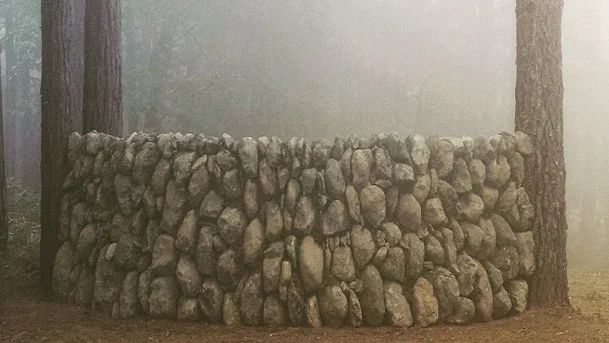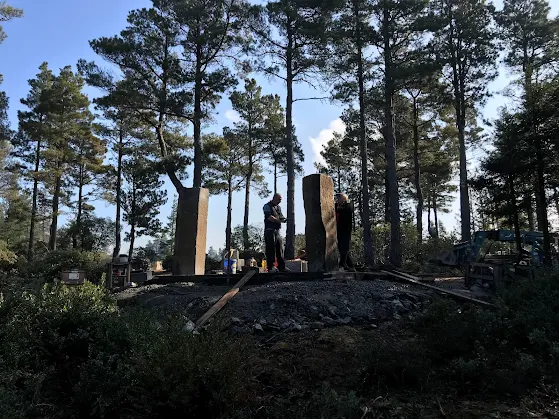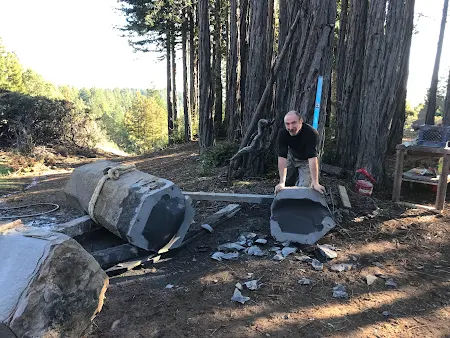Basalt Columns look manmade. They look like they are trying to look like a lot of work went into carving them. They are just asking to be stood upright , and to be used like bookends where dry stone walls start and end . And why not? They work.
We’ve used them in a number of stone art installations and I’ve used them creatively in workshop projects too.
Here we used three columns as bookends in this triangular three style wall workshop at Lygso Stone Supply in Redwood city
Here one shorter basalt served as a middle column for a double arch workshop I did with beginners.
This ‘test wall’ we created back in 2015 between two trees was successful enough that we reconfigured it in a second project using basalt columns to substitute for trees.
Imagine that ! Basalt stone, not just looking manmade but pretending to be trees too.
The columns would have the strength and mass and weight to do the job, and give it a beautiful manmade architectural look
In any case, making six conventional cheekend hexagonal wall corners with just mica schist material, (which was what we planned to use on the bulk of the hexagonal temple), would have been very difficult to do, and we would end up having corners with very weak bonds. So that's where we lean on the basalt to come to the rescue.
The point is its not difficult to find ways to accommodate such accommodating material into the dry stone mix.. And that's what we did in designing the six- sided temple.
Except now, the design had changed somewhat.
But that's for another blog entry.
And so began the next stage of the temple with no name yet.












